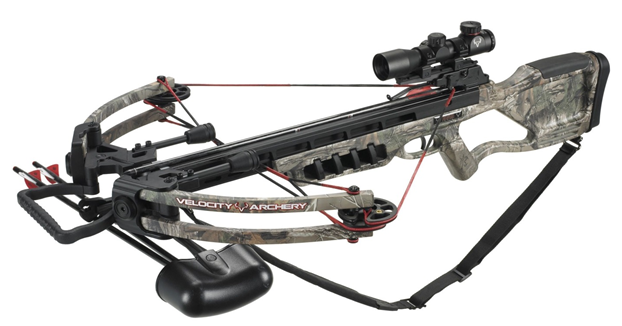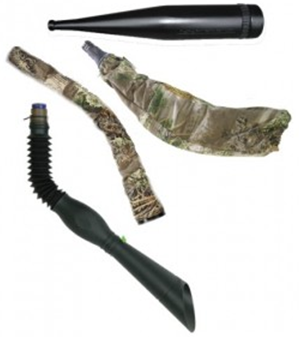Equipment
Whether planning to hunt with a bow, modern firearm, muzzleloader or with a pistol please the proper equipment for the game species targeted is critical. Equipment regulations for hunting elk are put in place by Kentucky Department of Fish and Wildlife Resources (KDFWR) to ensure the best opportunity for a hunter to be successful while creating the highest opportunity for a humane, quick kill for the game animal. Be sure to reference the current regulations specific to your equipment for additional information.
Below is a list of items to include in your pack for tracking, tagging, and harvesting your elk. Suggested items but not limited to, include:
- firearm or bow
- Heavy duty pack
- hunting license and elk tag
- Harvest Log
- good waterproof hiking boots, preferably broken in
- snacks
- water
- carabineers
- latex gloves
- compass
- handwipes/ baby wipes
- game bags (King size pillow cases work as well)
- zip ties
- heavy duty plastic or tarp
- heavy duty rope
- drag rope
- paracord
- binoculars
- headlamp
- map
- GPS
- sharp knife
- knife sharpener
- small saw
- flashlight
- calls (bugles, push button etc.)
- spare batteries
Firearms
The following are legal equipment for the firearm season in Kentucky:
- A modern rifle of .270 caliber or larger, with a magazine capable of holding no more than 10 rounds
- A muzzleloading rifle of .50 caliber or larger
- A muzzle-loading or breech-loading shotgun no smaller than 20-gauge, firing a single projectile (slug, round ball, conical bullet or saboted bullet) only
- A handgun loaded with centerfire cartridges at least 1.285 inches in length, firing bullets of .270 caliber or larger designed to expand upon impact
- Firearms may not be fully-automatic (capable of firing more than one round with one trigger pull)
- Full metal jacketed or tracer bullet ammunition is prohibited
- Hunter orange must be worn! Hunters and those who accompany them must wear hunter orange during firearm season
Bullet design
Picking which ammunition is best for you, your firearm and the game species can be complicated. Picking the right ammo is dependent upon if a hunter will use a rifle for elk only, or a deer rifle used for elk hunting. Weight retention and penetration are the keys to finding the right bullet. Practice helps you learn how far you can comfortably shoot; don't exceed that limit in the field. A heavier bullet than what is typically used for hunting white-tailed deer provides a more humane kill.
If you are hunting elk with the same gun you use to hunt deer, you should plan to find cartridges with heavier loads. While the lighter load may kill the elk, you may be tracking the animal a greater distance. A bullet will bring down an elk due to tissue damage and shock. The desire is a quick and efficient kill, and a heavier bullet will do more damage at the point of impact. (elk-hunting.org)
The projectile shot from a muzzleloader is usually heavy and moves at a much slower speed than that of a high powered rifle. Since it takes more time to load a muzzleloader, most hunters will only get one shot at an elk. It is a good idea to take a shot less than 100 yards when using a muzzleloader.
Bullets can range in size and caliber. Some boxes, from the major manufacturers, have icons of the game animals for which they are appropriate. Make sure you read the box thoroughly. Below are a few examples of readily available ammo that is appropriate for elk.
Calibers that is most popular for elk hunting are:
- .270
- .308
- .30-06
- .300 Short Magnum
- .338 Winchester Magnum
- 7mm Remington Magnum
Archery and Crossbow
Your bow setup is critical. A bow used for deer hunting will work for the majority of archery elk hunters. However, there are a variety of broadheads, arrows and bow types on the market today. Consider tweaking your setup for the maximum advantage during your elk hunt.
Heavier broadheads and arrows are best suited for elk hunting. Overall, the most popular weight is 100 grain, but heavier 125 grain heads will give better penetration. Do your research and choose a broadhead (either fixed or expandable) that review well for elk hunting. Do your research first! Don’t just buy them because they look cool! Be sure your bow is tuned properly and can accurately shoot a fixed blade broadhead.
There are many types of expandable broadheads. If you decide to go with an expandable broadhead, read reviews and talk to other hunters who have killed an elk with a bow. Not all expandable broadheads are suitable for elk hunting.
Your total arrow weight and bow poundage are also important. In today’s bow world, many hunters are opting for lighter arrows to produce more speed. This is an advantage for taking medium-sized animals such as a pronghorn and white-tailed deer.
However, elk present a larger, slower target. You need more kinetic energy – or knockdown power – than required for deer to bring a bull or cow elk to the ground. You can increase the kinetic energy of your setup by using a mid-weight or heavy arrow matched with a heavier broadhead.
It is also important to consider your bow’s poundage. Try to pull as much weight as you can while maintaining good form. You should be comfortable holding the bow at full draw for several seconds. Don’t crank your bow past its recommended poundage, however. Dial your bow back down if you are pulling too much weight. Proper form is more important than poundage in taking a good shot. A properly placed shot is more important for getting a clean kill than arrow weight, broadhead type and speed.
Crossbow and Archery
- Crossbows or archery equipment (long bows, recurves or compound bow) loaded with a fixed blade or mechanical broadheads at least seven-eighths of an inch wide (when blades extended).
- Broadheads may not be barbed, or chemically treated.
- Crossbows must have a working safety.
- A person drawn for an archery or crossbow permit may hunt with a crossbow during all archery and crossbow seasons if they are 15 years old or younger, 65 years of age or older or has a crossbow hunting method exemption permit at the time of the hunt.
 Image Source: Velocity Archery
Image Source: Velocity Archery
Calls
Note: A person shall not mimic the sound of an elk on public land open to elk hunting from Sept. 1 until the opening of the elk archery season.
Elk hunters use a variety of calls to entice the animals to come within shooting range. Many first-time elk hunters liken their experience to turkey hunting. As with turkey hunting, it is possible to call too much. Most novice elk hunters overuse the bugle call. Imagine a bugle call as a turkey gobble tube; use it only when you need to locate or challenge a bull. Use a cow call much like you would use a hen turkey call.
Many calls, such as a push-button call, are easy to use. Other calls, such as a latex mouth call, are trickier. Spend time practicing your call and you will be ready for your hunt. Be flexible on when and how you use your calls. Remember that elk can become call shy –just like turkeys.
Many elk hunters take a couple of friends on the hunt. If someone is calling for you, set them safely off to your side and have them call. Most elk will come directly to that call. Hunters will not have a good shooting angle if the caller stands by their side. However, a decoy can be a useful tool if you are by yourself or your animals are hanging up just out of shooting range. There are many lightweight packable decoys that are excellent tools for a spot and stalk hunt. Set them opposite from you in a visible place and use them like you would a caller.
 Image Source: Elk101.com
Image Source: Elk101.com